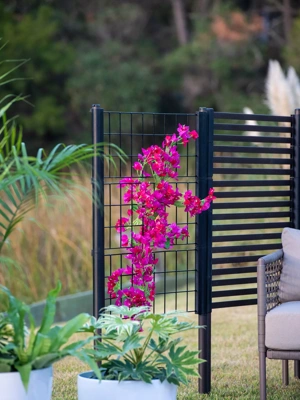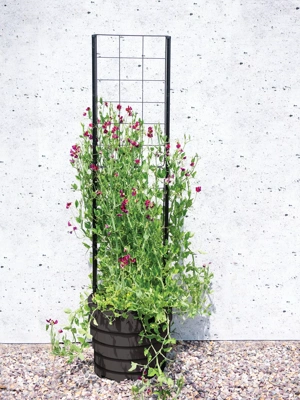How to Double Your Pea Harvest
There are a couple of tricky things about growing garden peas. The first is planting time. Plant too early, and your peas may be stunted by cold soil and frost. Plant too late, and your plants may start to shrivel up from the heat just as you get ready to start picking peas.

Every year is a bit different, but generally, I try to get my peas in a full month before the last frost date. Be sure to soak the seeds in water the night before you plant them. You can increase your pea harvest dramatically by using an inoculant.
Providing adequate moisture is another essential for a good crop of peas. Peas have shallow roots and are very thirsty plants. The soil around your peas should stay consistently moist, and depending on rainfall, that may require watering deeply two or three times a week.
Proper trellising your pea
 Proper trellising is also key. But the easiest and most dramatic way to increase your yield is to apply an inoculant at planting time.
Proper trellising is also key. But the easiest and most dramatic way to increase your yield is to apply an inoculant at planting time.
Peas are in the legume family, which means they have the unique ability to absorb nitrogen from the air as well as from the soil. But in order to achieve this special trick, their roots must be in the presence of a particular strain of rhizobial bacteria: Rhizobium leguminosarum biovar vicaea.
Wherever this bacteria enters the roots of the plant, it forms a hard little nodule. Inside the nodules is where the atmospheric nitrogen is converted so it can be utilized by the plant as a nutrient.
Plant your pea in healthy soil
 Healthy soils already contain many types of this beneficial rhizobial bacteria, but the concentration isn’t high enough to maximize performance.
Healthy soils already contain many types of this beneficial rhizobial bacteria, but the concentration isn’t high enough to maximize performance.
A $5 envelope of inoculant contains about 1½ oz of powdered bacteria—a little more than 2 tablespoons. Though the package says it will treat 5 lbs of seed, I now use 2 packages on ½ lb of seed (planting a double row, 20 feet long) and see a significant difference in vigor and yield.
The directions on the package usually say to put your pea seeds right in the plastic envelope and shake them around until they’re coated with an inoculant. I haven’t found this to be very effective. Instead, I open a furrow down the entire length of the row, put in the seeds, shake a little inoculant over the top of the seeds and then cover them up.
Not all garden centers stock inoculants, so to be safe, I order mine by mail. It’s important to purchase a fresh supply each year. Make sure that you purchase the strain of Rhizobium that’s right for peas—both Johnny’s Selected Seeds and Vesey’s Seeds have it. Sometimes all that’s available is a blend that’s suitable for both peas and beans. That works fine, but remember, roughly half of what you’re applying won’t be of any use to the peas.
Have you had good success using inoculants for your peas or beans? Leave a comment!
Last updated: 07/01/2023
Print this Article:
Related items
Get the Dirt
Stay up to date on new articles and advice. Please fill out the information below.











